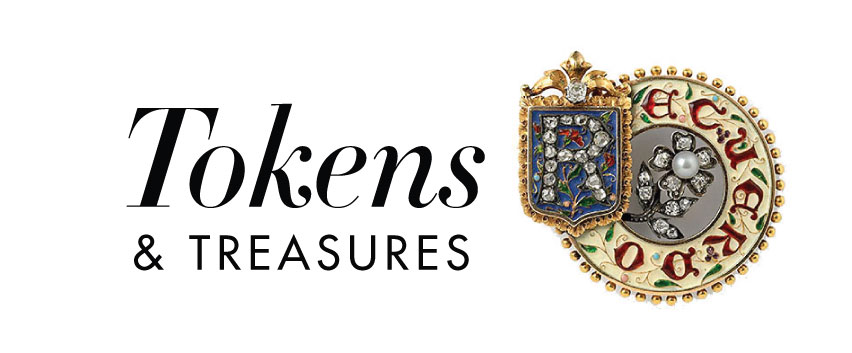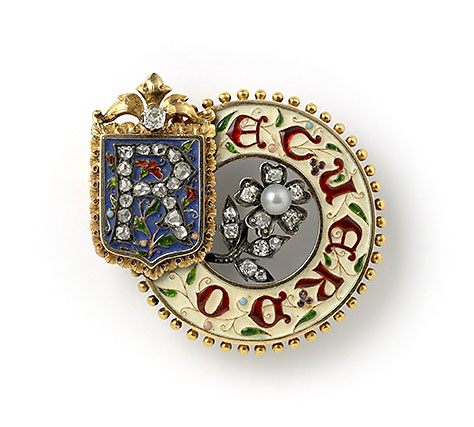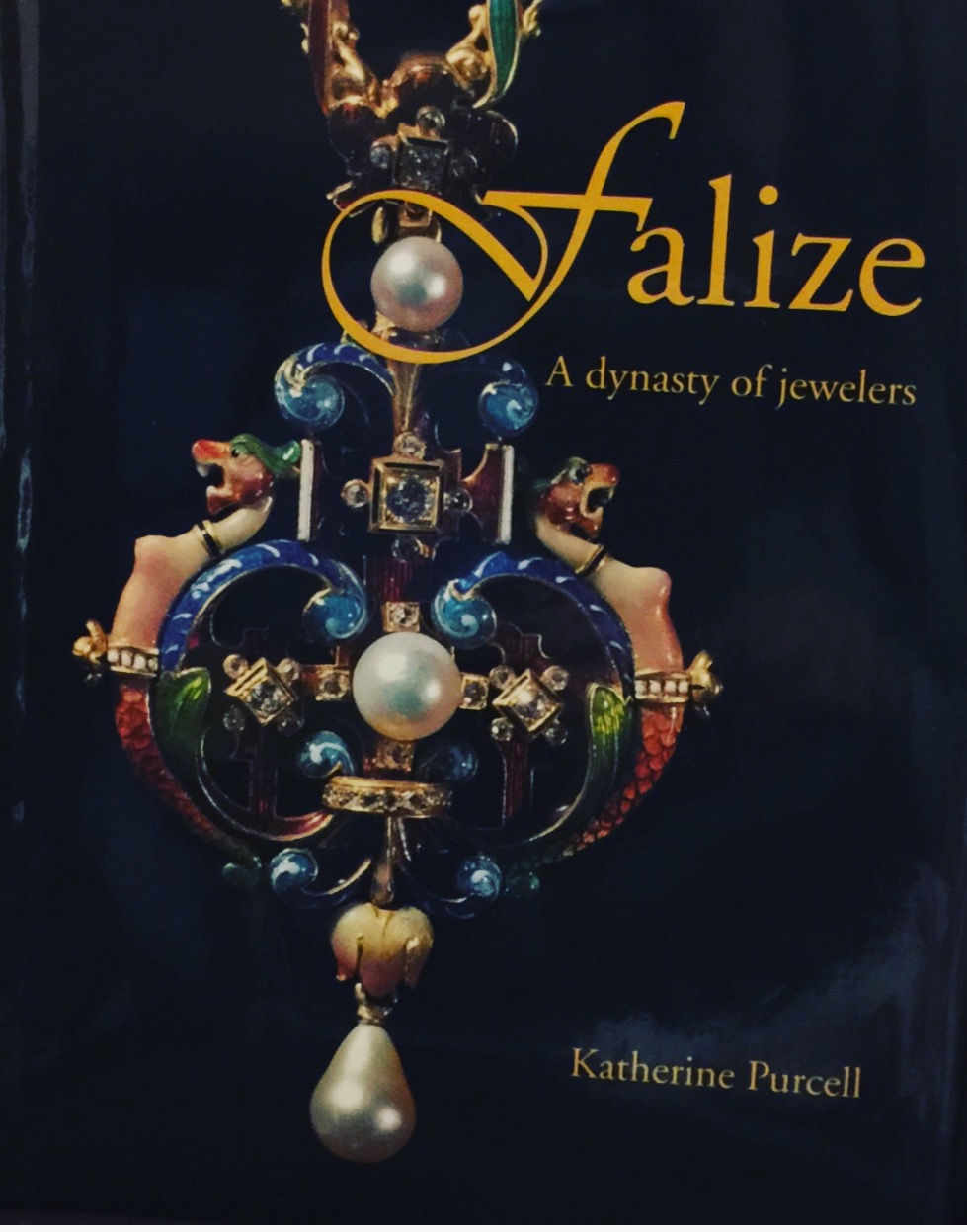Jewels To Covet: Wartski’s Lucien Falize’s medieval manuscript brooch

 Long before the legendary love story of the Duke and Duchess of Windsor was told through the secret messages and codes inscribed into the renowned jewels Prince Edward VIII gave to Wallis Simpson before he abdicated his thrown for her, the adornment of romance and affection were a huge part of jewelry’s history. Secret codes (acrostics) spelled out in the first letter of gemstones, verses and mottoes on posy rings, puzzles of words and motifs on all categories of jewelry, as well as an entire language of flowers created the pieces that spoke of the sentiment of friendship, courtship and the deepest of devotion.
Long before the legendary love story of the Duke and Duchess of Windsor was told through the secret messages and codes inscribed into the renowned jewels Prince Edward VIII gave to Wallis Simpson before he abdicated his thrown for her, the adornment of romance and affection were a huge part of jewelry’s history. Secret codes (acrostics) spelled out in the first letter of gemstones, verses and mottoes on posy rings, puzzles of words and motifs on all categories of jewelry, as well as an entire language of flowers created the pieces that spoke of the sentiment of friendship, courtship and the deepest of devotion.
Among the great romantic pieces were part of Lucien Falize’s works of art—in enamel, gold and gemstones.
The one which I set my gaze upon longingly I found at Wartski’s in London. Then with breath held and fingers crossed in hopes that it had not yet been sold, I went to visit it at Wartski’s booth at the TEFAF New York Show in October 2016. I let out a sigh of relief while holding it, my affection delved much deeper as I spoke with Katherine Purcell, Associate Managing Director of Warski and author of the book Falize: A Dynasty of Jewelers. I learned more about the piece and why it pulled at my heartstrings. It contained everything I could dream of in one small yet significant piece. Purcell explained, “The brooch is fashioned after a medieval manuscript. It features the word ‘Recuerdo’ (memento) and the first initial R is separated, as it would be in typically illuminated manuscripts. She continued, “The R is rendered in diamonds with an opaque blue enameled background while the rest of the word is decorated in red translucent enamel an gold foil against a cream ground which simulates the illuminated script on vellum.”
And as if that wasn’t enough to win my heart, Purcell continued, “it’s a double romantic jewel—it contains two messages—the one which reads memento and then the other in the form of a pansy flower in diamonds with a pearl in the center of the petals. Pensee in French translates ‘to think’ and in jewelry ‘to think of the giver.’” Purcell added. Lucien Falize created this brooch in Paris, circa 1880.
For those who are now hankering to know more about this segment of Falize’s body of work, Purcell dedicated a section in her book to Falize’s jewels based on medieval texts and manuscripts. As quoted from this chapter of book, which illustrates bracelets and brooches she writes, “…By adapting the technique to smaller-scale works, and using motifs derived fro medieval manuscript illustrators, Falize succeeded in creating jewels that were entirely his own.”
The jewels were based on pieces dating back to the end of the fourteenth century. “This particular fashion was emulated by Alexis and Lucien Falize, who created bracelets decorated with mottoes in medieval script before 1875.” In the book, Purcell gives us entry into the mind and creative process of Lucien Falize when speaking about this segment of his work and how he applied this art to bracelets. She states, “As Falize wrote, ‘So many things can be engraved on a circle of gold…monograms, mottoes, ciphers, emblems…Commemorations of marriages, births, family events to be remembered, particular dates, whether happy or sad. (These) bracelets are intimate mementos…They will no long be broken up, but will be handed down as family heirlooms, as precious as illuminated parchments.’ ”
I am hoping that all those who have a sentimental place in their hearts for romantic jewels, history, and the stunning way in which manuscripts were created in the past will appreciate this brooch and the story and meaning that are attached. It might have to be ” a one that got away’ for me but it will forever be a part of the jewelry loves of my life.
Photos of Brooch Courtesy of Wartski
Photos of monogrammed bracelet and a Recuerdo and Forever brooch from the book Falize: A Dynasty of Jewelers, courtesy of Thames & Hudson






